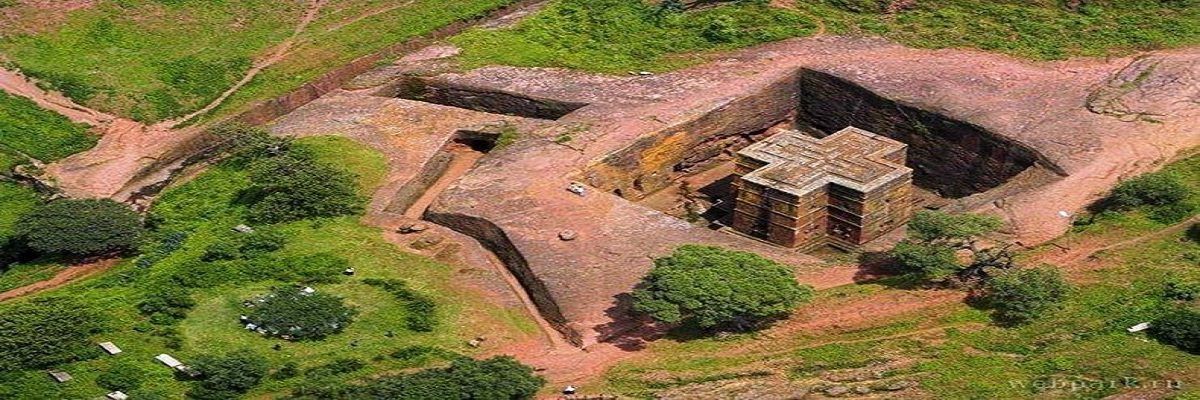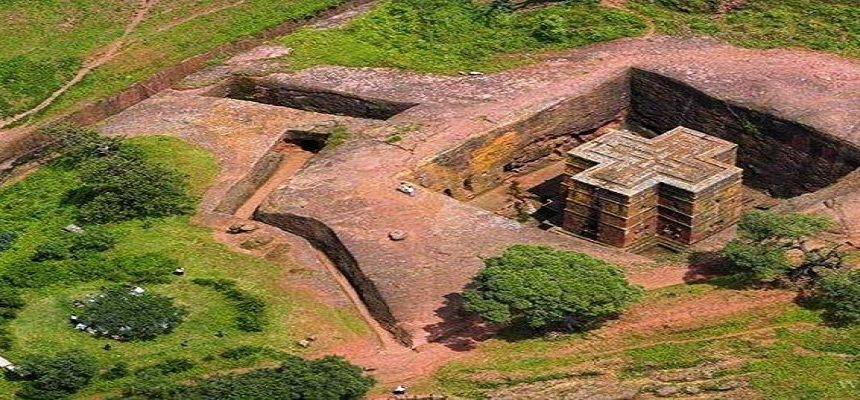Historical Tourist Attractions in Ethiopia:
Ethiopia historical tourist attractions are unique and traveler can do unusual things while they are on their Ethiopia tours in the northern part of the country. The north of Ethiopia has most of the most iconic and historical places in Ethiopia which are extremely popular for individual and/or group visits.
Axum: Historic Axum in northern Ethiopia was once the capital of a powerful kingdom. The missionaries from Eastern Europe introduced the ancient Christian faith which told the Christ had only one divine power. Axum became a secret city. On the site of two previous religious buildings its ancient cathedral, the St. Mary of Zion Church was rebuilt in 1665. Thrones constructed of stones have witnessed the coronation of various monarchs whose Ethiopian Orthodox faith from the 5th century spread far and wide. Heavy carpets cover old wall painting of the early Christianity; unique color of paintings of saints, martyrs and Mary with the child, Jesus. Axum is also referred to as Ethiopian Rome. It is the capital of the oldest Christian kingdom in the world, the largest outside the Roman Empire and crossroads to caravan roots to Arabia, Egypt and Nubia. The St. Mary of Zion Cathedral was established in 1665 under Emperor Haile Sellasie I, the last emperor of the Solomonian dynasty. It is one of Ethiopia's few religious buildings in which people gather to celebrate mass which lasts for several hours.
In the new cathedral, a 600 year old bible forms part of its well preserved treasures. Axum is dominated by about 130 Stelae. The stelae of the Axumite culture were created from natural stone from which numerous grave sites were built. The decoration of the stelae is a kind of living room. A construction method that combines layers of stone with wooden beams. At the time of Christ's birth, Axum was a prosperous center of power and culture. The largest stela lies in pieces on the ground, one of the largest monoliths of the world. The relative modest complex of the palace of the Queen of Sheba, the remains of Gudit stela Field which is named after the queen who said to have destroyed Axum, goods carrying on camels, small huts made of wood and clay, Mai Shum which is the bath of the Queen of Sheba, and tombs of ancient kings are other attractions of Axum. It continues to be a place of mystic; a pledge. Some of the most important Ethiopia historical tourist attractions which our Ethiopia historical tours include them are listed here below.
Lalibela: Lalibela, an extraordinary treasure of the history of mankind is located in the mountainous highlands of Ethiopia. In the 12th century the famous Amhara king, Lalibela decided to establish a new Jerusalem in his kingdom. Lalibela was the most important king of the Zagwe Dynasty in the old capital of Roha. Unique in their construction, the churches are among the most little known miracles of the world. This monolithic church was completely carved out of the the volcanic rock of the plateau. Even today, pilgrims and visitors are deeply touched by its unusual atmosphere. Ethiopian Christmas, one of the most famous religious festivals and events in Ethiopia is warmly celebrated in this historical city of the country. Lalibela is also one of the top Ethiopia cultural tourist attractions in north Ethiopia and our Ethiopia cultural tours mostly include this place.
Bahir Dar: Bahir Dar is a place with the monastery churches like an encyclopedia of Ethiopia's religious history. This city is located in north Ethiopia and famous for hosting ancient churches and monasteries in its 37 islands on Lake Tana. In these monasteries in a small treasury, one can see the remains of five emperors of various dynasties, various crowns of the over the years, valuable books and precious crosses that have been protected by royal guards, romantic natural lands, sacred treasures of the masterpieces of Ethiopian arts, and tropical vacation covered the volcanic cone of this Ethiopia's largest island lake. Religious faith is still deeply crucial in daily lives of the inhabitants of the highlands. The monks in theses monasteries keep the faith and the spiritual heritage of a legendary culture.
Interested in seeing the Bahir Dar skyline and surrounding area from different perspective? Simply hop aboard one of the city’s many boats and take in the sights of the metropolis from the majestic Lake Tana. You’re certain to be impressed by the views. Bahir Dar is a splendor place where once politicians bet. The entrances of the walls of some of the monasteries give the impression that in hostile times they were a place of refugee. The exterior of some of the other churches indicate the strict design of the country's early secret building.
Gondar: Gondar was a famous royal city of the 17th and 18th centuries, a city of palaces and castles. In a year 1636 for the first time in Ethiopia's history, King Fasiladas began with the construction of a walled palace. So in the course of the century, a huge fortification was built with several royal palaces and a number of churches.
The interior of King Fasiladas Palace contains a unique combination of influences from Portugal, Axum and India. Gebre Yohannes, son of Fasiladas took over the throne after his father's death in 1667 when he had the palace extensively enlarged. The next emperor Fasiladas grandson, Eyasu I had a further two-story palace built close to that of his grandfather in which elements of Saudi Arabian, African and European design was skillfully united. Dawit III, a son of Emperor Eyasu had his palace built in the north of Fasil Ghibi protected by a 900 meter long wall. Emperor Eyasu I had the Debre Birhan Selasie built, the monastery of the Holy Trinity on the mountain of lights. The church was built according to the unusual religious form of a long Axumite Basilica.
Kuskuam Monastery in Gondar: Kuskuam is a well protected church behind walls. The interior of the church was splendidly decorated. Stored within a tiny and joining building, are the last relics of the luxury art and knowledge of those bygone times.
Simien Mountains National Park: The Simien Mountains National Park is one of Ethiopia's UNESCO world Heritage Sites which is located at a close distance from Gondar. Despite the evening chill, Ethiopia's Simien Mountains provide the perfect home to one of Africa's most unusual grazing mammals. Unlike most monkeys, the Geladas' diet is primarily made up of grass. Geladas spend around 60% of their working hours croping the plains. Simien Mountains National Park is famous for its spectacular scenery, including the 4,543 meters Ras Dejen, the Walia Ibex, the Chelada Monkey and other endemic animals and it's one of the best places to do Ethiopia wildlife tours . Several guidebooks mention this place as the best place for adventure attractions and activities in Ethiopia.
Harar: In the east of Ethiopia is the historic city of Harar which was one of the most important trading centers of the Islamic faith and which remains a remarkable city with a fascinating history. The peaceful coexistence of religions in this city is exceptional and UNESCO recognized for peace, tolerance and solidarity. Life is colorful and noisy in Harar. The walled city, numerous costumes and old books, the Rimbaud House which was the former of the French poet, kitchen utensils, small markets of food, baskets and other items, the hyena man are some the important attractions one can visit in his Harar tour. Harar comes alive during the Ashura ceremony, which takes place on the 10th day of Muharram, the first month of the Islamic Calendar. Clients are able to combine Harar tour with nature rich in adventure. Please visit our Harar and Lake Wonchi (Lake Wenchi) tour packages for more details on the same.
Please visit 6 days' and 5 nights' Ethiopia historical tour packages and 9 days' and 8 nights' Ethiopia historical tour packages to get optional itineraries to the historical places of Ethiopia.


